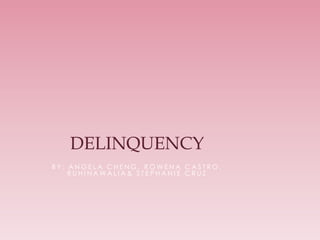The document discusses several theories of delinquency including social structural theory, social disorganization theory, and strain theory. Social disorganization theory and strain theory posit that higher crime rates are related to the social structure and organization of communities. Areas with high crime rates tend to have characteristics like economic deprivation, residential instability, family disruption, and proximity to other high crime areas. The document then compares community characteristics in San Francisco and San Jose such as income, education levels, poverty, and homeownership to explain why San Francisco has higher crime rates among juveniles than San Jose.












